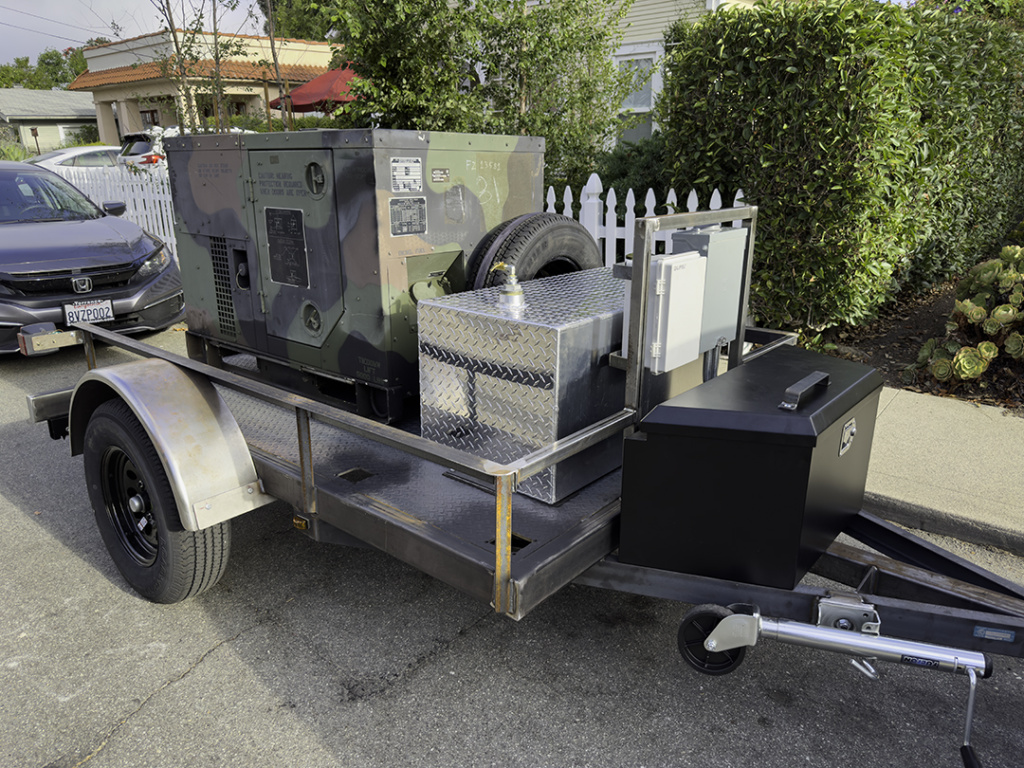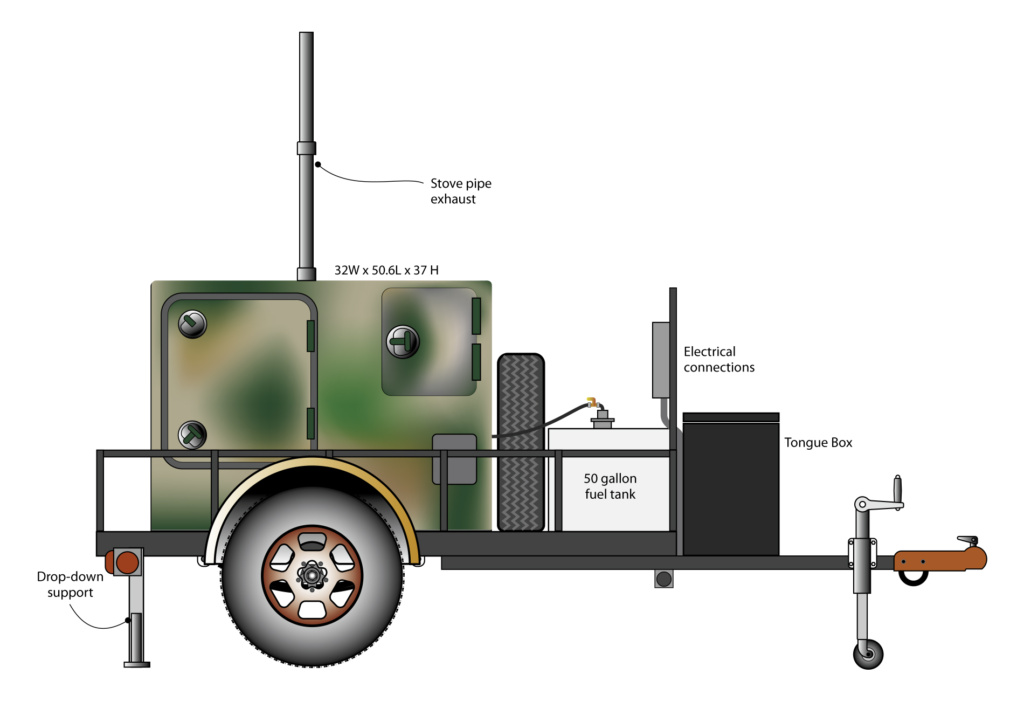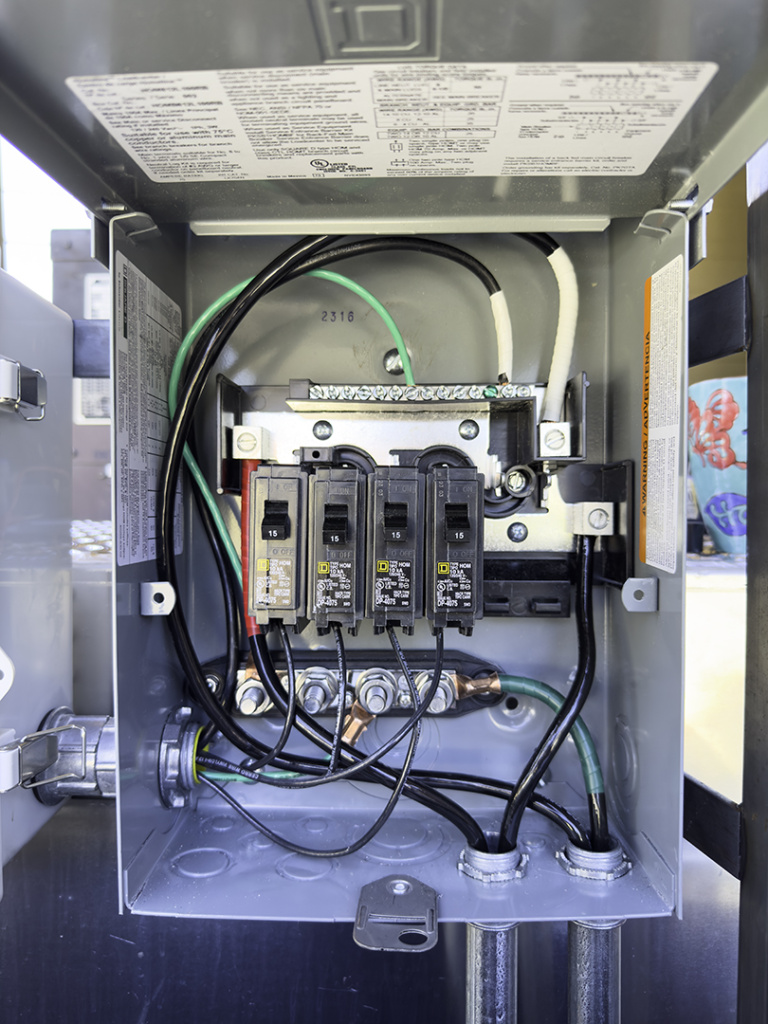
This is Part 4 of a series of stories about designing and building a trailer to hold a generator for Burning Man. To read the previous story, please click here.
I had the trailer, minus its load, ready to be licensed. This meant that I had to prepare two documents I downloaded from the Department of Motor Vehicles, a bill of materials with costs, and I needed a check to cover the registration fees.

Then I had to tow the trailer to the DMV, and present myself, with the aforementioned paperwork, for inspection. It was a bit confusing. They told me to take the trailer to the back of the building and push the doorbell button on the wall. There was no button, but there was a hole where the button once was. I went back inside and asked for help. The man in the middle of the cubicles said that I should wait outside and that a representative would be with me in a minute.

On this particular morning there was one DMV employee tasked with giving driving tests, bus driver tests, vehicle inspections, and – finally –trailer inspections. He told me to take my trailer and park it in the motorcycle test drive area. I did as I was told. After a long wait, that nice fellow joined me in the motorcycle area and he filled out a form showing that he had inspected the trailer. He applied a VIN number to the tongue of the trailer. Then he sent me back inside to pay the fees.
When my number was finally called, I showed my paperwork to a DMV registration specialist. He went over every expense for every part of the trailer. I assumed he was being really diligent. Eventually he said, “I don’t want you to pay tax on tax, so I’ve subtracted out all of the tax you paid on these parts. That reduces the value of the trailer by $74.00.”
When he was finished, he asked for a check to pay the fees (8.25 percent of the cost of making the trailer). I wrote a check, and he handed me a new license plate. I walked out the door just 3.5 hours after walking in. I was issued a permanent trailer license plate. The California DMV doesn’t want to see me for five years, when they will send me a bill for $20 to cover the following five years. I like that plan.

I returned the trailer to Hank, and he bolted the generator to the trailer, he welded conduits to the bottom to carry the high voltage wires from the generator to the electric service panel. He attached the 50-gallon fuel tank to the front and he affixed the electrical boxes to a bracket in the front, finishing the trailer. Now it was my turn to fish the wires through the conduits, complete the high voltage/high current power to the breaker box, and then to attach the wires headed to the four GFCI outlets in the distribution panel. All of this took me about four hours.
When I was finished, I rolled the trailer onto the street in front of my house, started the generator, and then I plugged in a shop vacuum to test each of the circuits. Everything worked. Since I had spent the better part of two months planning, illustrating, building and wiring the high voltage components for this trailer, I was not surprised in the least. Had anything not worked, I would have been surprised.
The door to the tongue box rattled mercilessly while the generator was running, as did three of the doors on the generator housing. I rode my bike to the hardware store and bought some weatherstripping, which I added to the rattle-prone doors. Soon, I had the generator working nicely without any extra noises. It was a really good feeling.
So the trailer really was finished – not painted – but finished. I drove it around a bit with the generator on it, and it feels OK (I don’t have much experience towing). I bolted the last of the D-rings to the bed of the trailer, all stainless steel to prevent rust. Then I started worrying that the trailer, with its valuable cargo, could be stolen from its spot on the street in front of my house. I hitched it to my VW Touareg, and put a padlock on the hitch, then I put a large cable and lock on one of the wheels. I know that it wouldn’t take long for a determined thief to remove these impediments, but I tried to make it more difficult to steal so that I could sleep at night.
Tomorrow I am leaving for my two-day journey to Burning Man. I will drive the first big leg from San Luis Obispo to Reno on Thursday, then I’ll get up early and drive to Burning Man on Friday morning early.
Nothing will go wrong.
